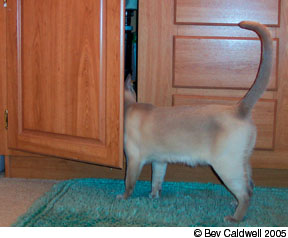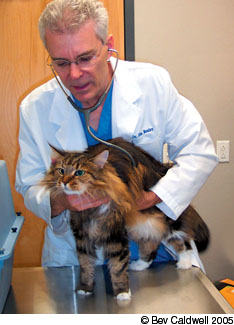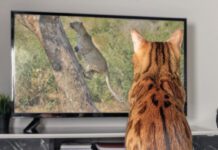Keeping a clean, fresh-smelling house is a never-ending process, especially if you live with multiple cats. Plastic litter boxes can harbor odors, pet smells often linger in carpeting and furniture, and even airborne particles can cause odors to build up. When looking for products that work effectively, cat owners must also consider their safety for humans and pets.

288
The Nature of the Beast
The fastidious nature of cats increases the likelihood that they will accidentally ingest a chemical. Anything that gets on a cat gets in a cat, because they lick it off, says Karyn Bischoff, DVM, a clinical toxicologist at Cornell Universitys College of Veterinary Medicine.
In 2004, the ASPCA Animal Poison Control Center handled more than 4,800 cases pertaining to household cleaning agents and laundry products. Although federal regulations govern the use of precautionary statements – CAUTION, WARNING or DANGER – the only products required by law to reveal active ingredients on the labels are disinfectants. If labels do list ingredients, the sequence does not necessarily represent the relative quantity of each.
Chemical Cleaners & Disinfectants
Chemical cleaners can potentially be poisonous. Phenol and phenol derivatives such as creosote, naphthol and wood tar – found in some popular supermarket brands – are especially toxic to cats. Ingestion can be deadly. Chemical cleaners are the most dangerous, says Dr. Bischoff, who is certified by the American Board of Veterinary Toxicology. They can cause irritation or damage to the skin, mouth, eyes, esophagus, lungs and nervous system.
Many cleaners, such as drain and toilet bowl cleaners, contain corrosive acids or alkalis and will irritate or burn the skin or eyes on contact. Some cleaning products are harmful if inhaled. Disinfectants eliminate odors by removing odor-causing bacteria. Veterinary hospitals and animal shelters use them to prevent the spread of diseases, but they must be used with care. Of those 4,800 cleaning product-related cases handled by the Animal Poison Control Center, about 600 pertained to disinfectants. While the severity of clinical problems can vary depending on the exposure, bleach and other corrosive cleaners tend to be the most hazardous, says Dana Farbman, a certified veterinary technician and senior manager for client and professional relations at the APCC.
Disinfectants that contain quaternary ammonium compounds are extremely dangerous.
Ingestion of material containing quaternary ammonium compounds is an emergency, says Dr. Bischoff. Any time a cat is exposed, she will need to see a veterinary professional.
Most household bleach contains chlorine, and a quick check of the labels on the supermarket shelf reveals that they carry a caution: corrosive statement. Bleach can be very effective in safely disinfecting certain household surfaces when used appropriately, says Ms. Farbman. But it can cause upset stomach, drooling, vomiting or diarrhea and severe oral burns if ingested, and respiratory tract irritation if inhaled.
Stabilized chlorine dioxide, unlike chlorine bleach, is an odorless disinfectant that destroys bacteria, viruses and fungi without attacking cells or generating toxic byproducts. Chlorine dioxide is used in a variety of products, such as deodorizers, aquarium treatments and even dental rinses, says Ms. Farbman. While high concentrations of chlorine dioxide can be potentially irritating to eyes, skin and the respiratory and gastrointestinal tracts, most commercial products contain relatively low concentrations of about one to two percent. At these levels, minor stomach upset would be the limit of what we would anticipate from ingestion, says Ms. Farbman.
Natural Cleaners
Baking soda, vinegar, lemon juice and borax are considered natural cleaners. Although these products are relatively safe, pet owners still need to maintain a degree of awareness. Baking soda has a low toxicity, explains Dr. Bischoff. But it is salt, and salt can change the ion balance and cause depression and bloating. If baking soda is swallowed, it can react with stomach acid. Vinegar can be a problem if accidentally sprayed into a cats eyes. Borax is a natural mineral compound found within the earth and used to clean and disinfect the home. Though borax is safe if used as directed, overexposure can cause skin, eye or respiratory irritation and kidney damage; ingestion of less than five grams can be lethal to a pet. Lemon juice is safe as a cleaner, but the peel contains d-limonine, a turpene (oil) to which cats are sensitive. D-limonene can cause skin irritation and affect the nervous system, kidneys and liver, says Dr. Bischoff.
To eliminate pet urine odors, most experts recommend an enzyme cleaner. Enzymes have not been a problem and are pretty effective, but a cat can still smell the urine odor and may soil the spot again, says Dr. Bischoff.

234
Organic compounds are made from plant, animal or synthetic sources and contain carbon. Organic cleaners (sometimes called green cleaners) are made from plant extracts and are generally safe to use around pets.
Air and Fabric Fresheners
Sprays, plug-ins or potpourris that freshen the air inside the home mask odors rather than eliminating them. Plug-ins and sprays are generally safe if used away from the pet and in moderation, but potpourris are potentially dangerous. Potpourris contain quaternary ammonium compounds to kill bacteria and mold and can cause severe burns to a cats tongue and lips and tissue damage to the mouth and esophagus. Liquid potpourris are a major source of toxic problems in cats, says Dr. Bischoff.
Mechanical air purifiers run on electricity to clean the air. Aside from potential problems with cats chewing on electrical cords, mechanical air purifiers are fairly safe, says Dr. Bischoff. They may help with mold and reduce allergens.
Although strong, most disinfectants and chemical cleaners can safely eliminate odors if used according to package directions. While any chemical can be potentially toxic depending on the exposure, many household cleaners can be used safely in homes with pets when used per label directions, says Ms. Farbman. Read and follow label directions for proper use.
If your cat ingests a potentially harmful chemical, call a veterinarian or the ASPCA Animal Poison Control Center (888-426-4435) immediately. Provide your credit card number, the product name, the amount the cat was exposed to, the conditions under which the cat was exposed and your cats weight. Have the product in hand, if possible, says Dr. Bischoff.



